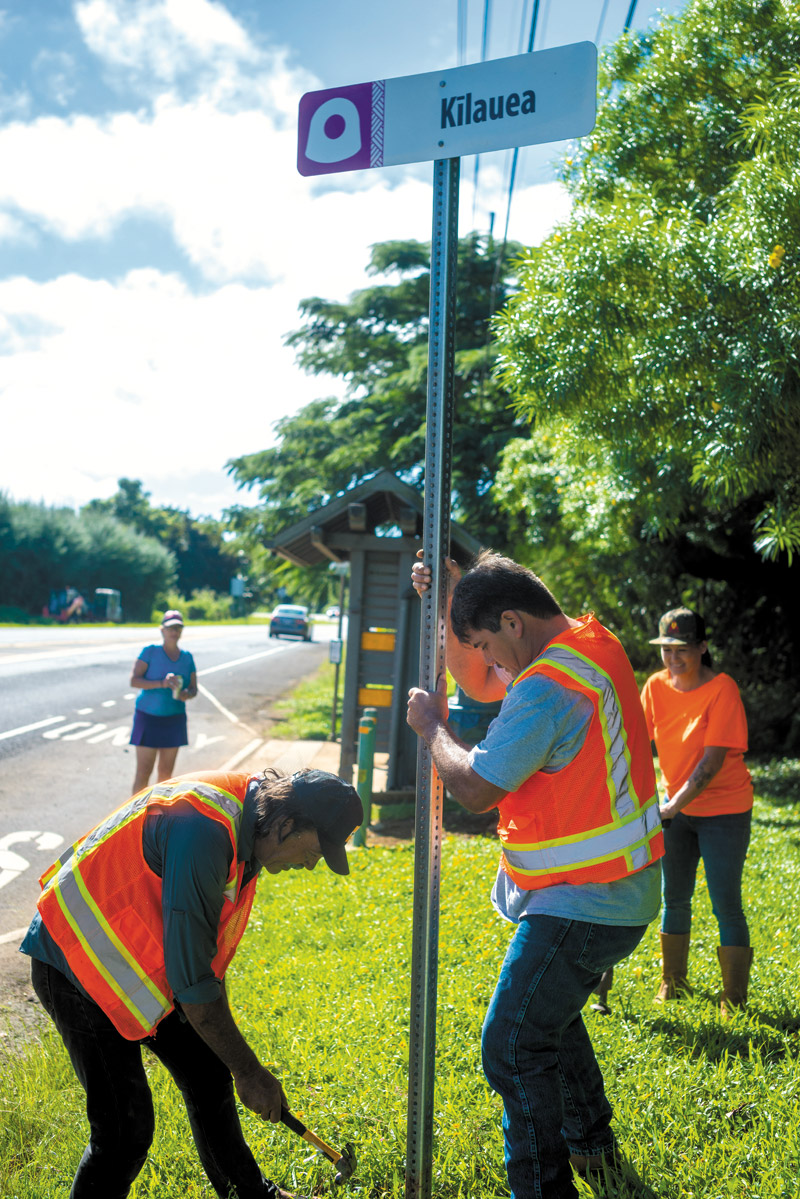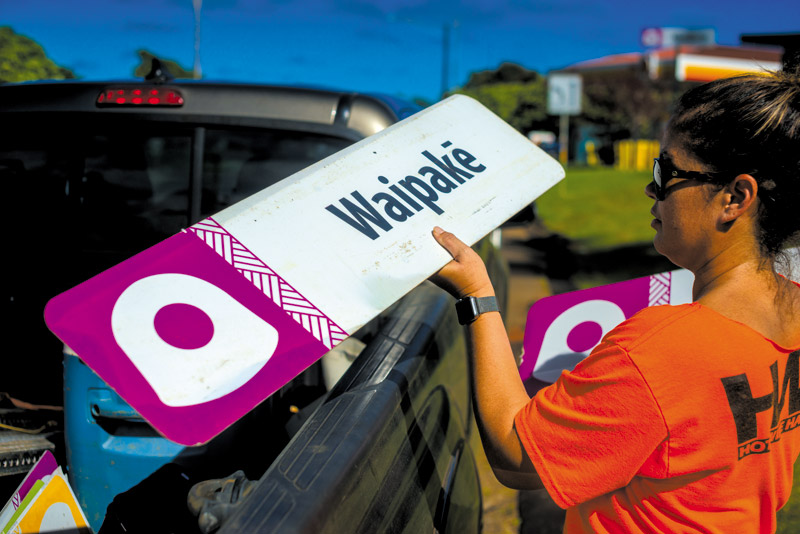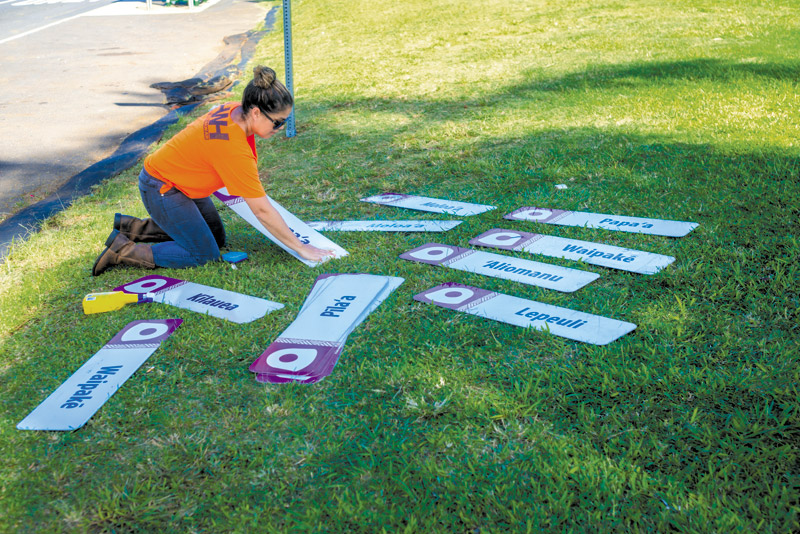Signs Of The Times
Modern, colorful ahupua‘a markers are popping up within the Garden Isle’s six moku and showcase the areas’ original Hawaiian place names.
Every place has a name, and every name has a meaning, says Canen Ho‘okano. He’s one of a handful of people who have been installing ancient place name signs around the island through county initiative Kaua‘i Nui Kuapapa.
“It helps people to understand who they are and where they’re from — a sense of identity and a sense of pride,” he says.
Kaua‘i Nui Kuapapa and its volunteer reserves first came together more than two years ago with the sole mission of identifying Kaua‘i’s 54 ahupua‘a (land divisions from mountain to sea) and six moku (districts), including Ni‘ihau.
The purpose is to help people understand the proper names of the Garden Isle’s land divisions, as well as help Native Hawaiians connect to their ‘ohana.

Randy Wichman (left) and Canen Ho‘okano put the K°lauea ahupua‘a sign in its proper place on the North Shore.
“It’s important for us to understand where we are from, and our place,” says Kanoe Ahuna, Kaua‘i Nui Kuapapa project coordinator. She, like Ho‘okano, is of Hawaiian ancestry.
“If you can identify your own place and your own home, it’s easier to share and be more open to understanding other people’s, as well,” she adds.
Randy Wichman, another dedicated member of the group, grew up learning about the boundaries and borders of the island from his father, famed historian F.B. Wichman. Randy then used that knowledge, as well as government records and his extensive research of 18thand 19th-century survey maps, to help determine Kaua‘i’s historical boundaries.
The signage that came about from Randy’s research has already helped people learn about places they never knew existed, the natural resources surrounding them, and where their families originated from. Few people, for example, knew about the Pōki‘ikauna ahupua‘a on the Westside within the Kona moku. This new knowledge has caused residents to express their gratitude to the group for giving them back their identity. By being able to relate to the land, people form a connection to it, along with a desire to care for it.
“If people want to take care of things, take care of your own ahupua‘a first, what’s in your own front yard,” says Randy, whose Hawaiian family heritage originates from Hā‘ena.
Once a bond is formed with an ahupua‘a, then the appreciation can extend outward.
“Then take care of your moku, then take care of your island,” he adds.
Kaua‘i Nui Kuapapa — interpreted as “the genealogy of Great Kaua‘i” — has experienced relatively smooth sailing so far, but has been delayed on occasion due to sign thefts. Apparently, people wanted to take them home as keepsakes, but that action prevents the project from fulfilling its mission to educate the community.
“This is really a project to help sustain who we are as people, and our ‘āina on Kaua‘i. We’re taking away from that education,” Ahuna says.
Ahuna, for her part, believes it ought to be considered kapu to steal the signs, as they represent the Native Hawaiian culture.
To address the thefts, one of the group’s future goals (planned for next spring or summer) is to launch a Kickstarter campaign to produce plastic signs that people can purchase for their homes. Another upcoming objective is the installation of signage at all the new bus stops, so people can learn the history behind each locale’s moku.
Additionally, interpretive signs — which detail, for example, the history and names of winds in the district — will be placed within each moku. Plac-
ards recently were installed in Wailuā within the Puna moku, and more are planned for areas along the walking path from Hikinaakalā heiau to Lydgate Pavilion, as well as the new Hanalei neighborhood center in the Halele‘a moku.
“We do this because it’s part of our culture,” says Ho‘okano. “It’s about our identity and where we’re from and who we are.”
Above all, it’s about connecting the community to the land, concludes Ahuna.
“We’re here to help the ‘āina tell its story,” she says. “The ‘āina can’t speak verbally and share everything, so we’re helping the ‘āina by doing this project.”
Visit kauainuikuapapa.com for more information.






